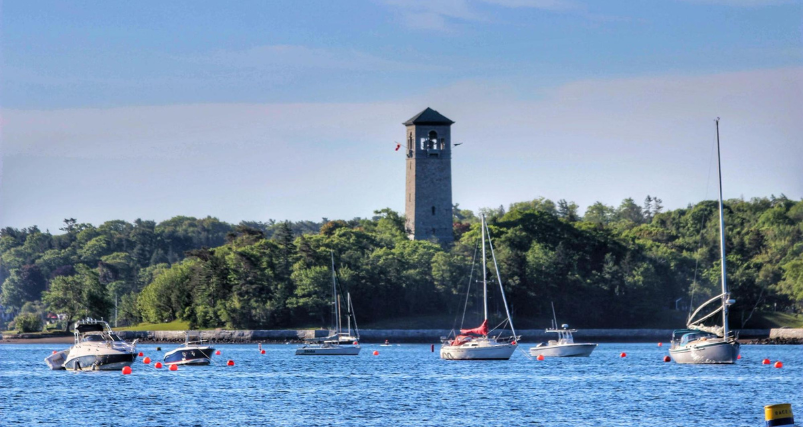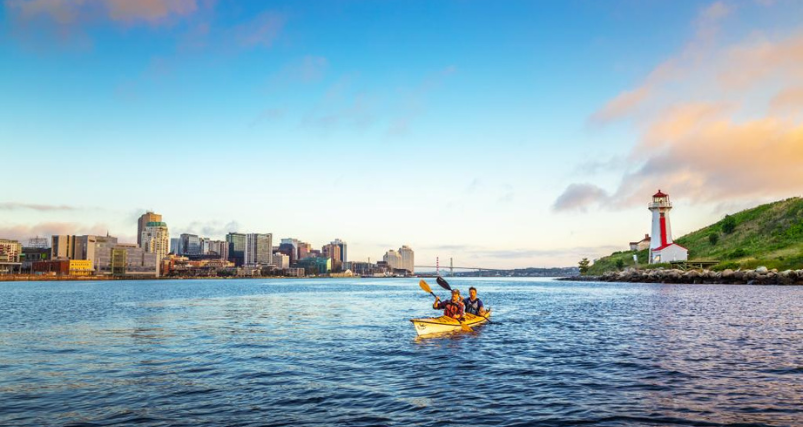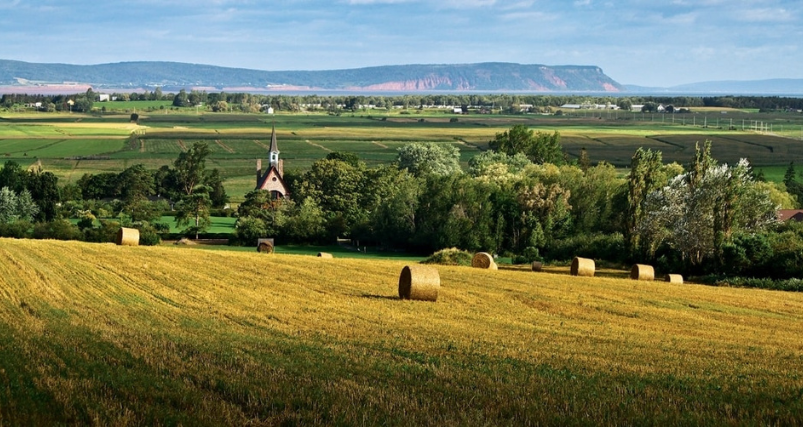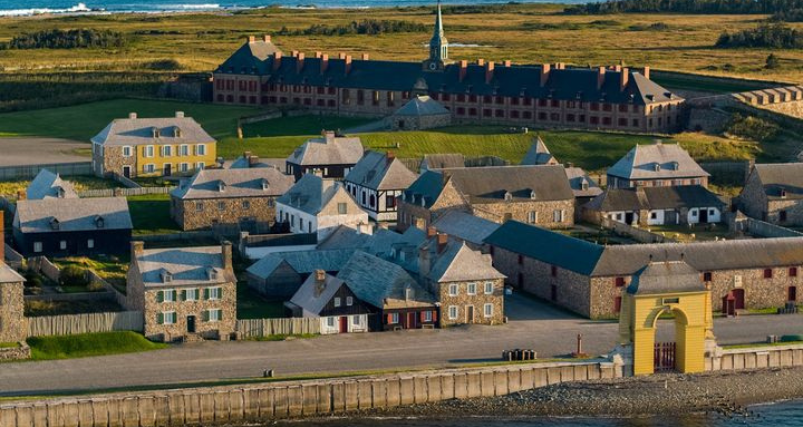My Bookings
Please Enter Your Booking Code To Find Your Booked Tour!

15 Fascinating Facts About Nova Scotia: Fun, Interesting, and Historical
Table of Contents
Surrounded by 4 major water bodies Nova Scotia has a wealth of interesting tidbits that make it the perfect tourist destination. This province located on Canada's southeastern coast has over 20 hiking trails and 6 beaches. Every corner of this region has its own story to tell and some fun activities already planned for your adventure.
Here are 15 fun facts about Nova Scotia that explain why it is a top tourist destination in Canada. Whether you want to look for historical buildings, an adventurous escape, or simply want to spend some time with nature, Nova Scotia promises to provide you with something fun and interesting.

(Credit: Viz (he/him)/Pexels)
1. Home of the Mi'kmaq People
Before European settlers arrived, Nova Scotia was inhabited by the Mi kmaq people. They have lived in the region for thousands of years and continue to maintain a vibrant cultural presence. The Mi'kmaq are known for their deep connection to the land, which is evident in their traditions, stories, and art. Their knowledge of the local environment has been passed down through generations, showcasing their expertise in hunting, fishing, and foraging.
Today, the Mi'kmaq community actively participates in preserving their heritage through cultural events, language revitalization efforts, and educational programs. Sites such as Kejimkujik National Park serve as significant places for the Mi'kmaq, offering visitors a chance to learn about their history and the profound spiritual bond they share with the natural world.
2. Cape Breton Highlands National Park
One of the crown jewels of Nova Scotia is the Cape Breton Highlands National Park. Located on Cape Breton Island, this park is a natural paradise featuring rugged cliffs, dense forests, and a stunning coastline along the Atlantic Ocean. It's also part of the Cabot Trail, one of the world's most scenic drives.The park is home to diverse wildlife, including moose, bald eagles, and whales, offering visitors a chance to experience nature up close. Hiking trails like the Skyline Trail provide breathtaking views of the Gulf of St. Lawrence, while the park's vibrant fall foliage attracts leaf-peepers from near and far. Cape Breton Highlands National Park is not only a haven for outdoor enthusiasts but also a place where the rich cultural heritage of the Mi'kmaq people and Acadian settlers is celebrated.
3. Part of the Maritime Provinces
Nova Scotia is one of the three Maritime provinces, along with New Brunswick and Prince Edward Island. This region is known for its coastal beauty, maritime culture, and historical significance in Canada's development.

(Credit: Nova Scotia/Facebook)
The maritime culture is celebrated through vibrant festivals, music, and local cuisines, such as the famous seafood chowder and fresh lobster. Historically, Nova Scotia played a crucial role as a gateway for early European settlers and as a center for shipbuilding and trade, shaping its unique identity within Canada. Today, it remains a blend of natural wonders and rich cultural heritage, offering a deep connection to both its past and present.
Explore Nova Scotia. Book your Halifax tour now!
4. Connecting 90 Countries Around the World
Nova Scotia's strategic location along the Atlantic coast has made it a key player in international trade. The province exports goods to over 90 countries around the world, with seafood, particularly lobster, being one of its most famous exports. In addition to seafood, Nova Scotia is known for its high-quality blueberries, apples, and wine, contributing to its reputation as a hub for agri-food exports.
The region's strong trade relationships are bolstered by its well-developed infrastructure, including ports, railways, and airports, which facilitate the efficient movement of goods. The province's export economy not only supports local businesses but also plays a vital role in sustaining rural communities and preserving traditional industries.
5. Atlantic Coastline
With more than 7,400 kilometers of coastline, Nova Scotia boasts some of the most dramatic and beautiful ocean views in the world. The Atlantic coast is dotted with charming fishing villages, pristine beaches, and opportunities for whale watching and other marine activities.
Visitors can explore the iconic lighthouses that stand sentinel along the rugged shores, enjoy fresh seafood from local markets, and take in breathtaking sunsets over the Atlantic. Whether you're kayaking along the coast, hiking the scenic trails, or simply relaxing by the water, Nova Scotia's coastline offers a captivating experience for all who visit.
6. Sir William Alexander and the Scottish Connection
Nova Scotia's name and early settlement were influenced by Sir William Alexander, a Scottish nobleman who received a land grant for the region in 1621. His efforts to establish a Scottish colony in the area laid the groundwork for the province's strong Scottish cultural ties.
The name "Nova Scotia" itself means "New Scotland" in Latin, reflecting the ambition to create a new Scottish homeland. Although the initial settlement efforts faced numerous challenges, including harsh weather and conflicts with the French, the Scottish influence endured.
Today, this heritage is evident in the region's place names, architecture, and cultural events, such as the annual Highland Games and the vibrant Celtic music scene. These traditions continue to celebrate the province's Scottish roots, making Nova Scotia a unique blend of cultures and histories.
7. The Fertile Annapolis Valley
The Annapolis Valley is one of Nova Scotia's most fertile regions, known for its agriculture, particularly apple orchards and vineyards. The valley's microclimate makes it ideal for growing a variety of crops, and it's a key area for the province's wine production.

(Credit: Willet Hang/Facebook)
The Annapolis Valley is home to several award-winning wineries that produce high-quality wines, showcasing the valley's potential as a prominent player in Canada's wine industry. Additionally, the area's scenic beauty, with rolling hills and picturesque farms, makes it a popular destination for agritourism, offering visitors the chance to experience farm tours, apple picking, and wine tastings.
8. Bay of Fundy: Home to the World's Highest Tides
The Bay of Fundy, located between Nova Scotia and New Brunswick, is famous for having the highest tides in the world. The tides can reach over 16 meters (53 feet) and have created unique geological formations like the Hopewell Rocks.
These dramatic tides expose fossils, uncover ancient seabeds, and offer the chance to walk on the ocean floor. The bay is also home to diverse marine life, including several species of whales, making it a popular spot for whale watching and ecotourism. The awe-inspiring ebb and flow of the Bay of Fundy's tides provide an unforgettable natural spectacle, drawing visitors from around the globe.
9. Nova Scotia is Home to Three UNESCO World Heritage Sites
Nova Scotia is proud to be home to three UNESCO World Heritage Sites: the Old Town Lunenburg, a perfectly preserved British colonial settlement; the Joggins Fossil Cliffs, which provide a window into the Earth’s history; and the Grand-Pré, a memorial to the Acadian people.
The Joggins Fossil Cliffs, often referred to as the “Coal Age Galápagos,” offer an extraordinary glimpse into life 300 million years ago, revealing well-preserved fossils from a time when the area was covered by lush forests and swamps. Meanwhile, Grand-Pré is a poignant reminder of the Acadian deportation in the 18th century, serving as a symbol of resilience and the enduring spirit of Acadian culture.
10. The Gulf of Saint Lawrence and Prince Edward Island
Nova Scotia is bordered by the Gulf of Saint Lawrence, which separates it from Prince Edward Island. The gulf is crucial for the province's fishing industry and has been a vital waterway for centuries.
The Gulf of Saint Lawrence also serves as an important route for maritime shipping and has historical significance as a gateway for explorers, traders, and settlers who shaped the region's early development.
11. National Historic Sites of Canada
Nova Scotia is dotted with National Historic Sites that commemorate its rich history. Sites like the Fortress of Louisbourg, a reconstructed 18th-century French fortress, and the Halifax Citadel, a star-shaped fort overlooking Halifax, offer glimpses into the province's past.

(Credit: Fortress of Louisbourg National Historic Site/Facebook)
12. Land Border with New Brunswick
Nova Scotia is connected to the rest of Canada by a narrow land border with New Brunswick. This strategic connection has been vital for trade and travel throughout the province's history.
The Isthmus of Chignecto, which forms this narrow link, has long served as a crucial corridor for the movement of goods and people. Historically, it was a key route for the Indigenous Mi'kmaq people, European explorers, and settlers, facilitating cultural exchange and economic development.
13. An Exporter of Christmas Trees and Lobster
Nova Scotia is famous for its export of two key products: Christmas trees and lobster. The province's balsam firs are a popular choice for Christmas trees around the world, and its lobster is considered some of the finest on the market.
The lobster industry is a vital part of the provincial economy, with local fishermen employing time-honored methods to ensure a high-quality catch. Both products reflect Nova Scotia's rich natural resources and strong traditions, contributing significantly to the province's reputation and economy on the global stage.
14. Surrounded by the Atlantic Ocean
Nova Scotia is almost entirely surrounded by the Atlantic Ocean, giving it a distinct maritime character. The ocean has shaped the province's history, culture, and economy, making it a true gem of Canada's East Coast.
The constant interplay between land and sea has fostered a unique maritime culture that is celebrated through festivals, seafood cuisine, and vibrant coastal towns. This deep connection to the ocean also provides Nova Scotia with stunning natural landscapes, including rugged cliffs, sandy beaches, and picturesque harbors.
15. More Fun Facts About Nova Scotia
- Nova Scotia means "New Scotland" in Latin.
- It has more lighthouses than any other province in Canada, reflecting its deep maritime heritage.
- The province is home to one of the world's largest natural harbors, Halifax Harbor.
Conclusion
Nova Scotia is a province rich in history, natural beauty, and cultural significance. From its indigenous roots to its role in international trade, Nova Scotia's story is as diverse as it is fascinating. The province’s history is marked by the influence of the Mi'kmaq people, early European settlers, and the enduring Scottish heritage. Its natural landscapes range from rugged coastlines and scenic cliffs to lush forests and picturesque lakes. Whether you're exploring its historic sites like the Old Town Lunenburg and Grand-Pré, or enjoying its world-renowned seafood and vibrant festivals, there’s always something new to discover in this remarkable province. Nova Scotia's blend of cultural heritage, stunning scenery, and rich traditions make it a captivating destination for visitors and a cherished home for its residents.Related Blogs
No Blogs Found
It seems there are no blogs available for this category at the moment. Please check back later for updates!
Quick Links
Book your Tour
Get in Touch
Toll Free
1-888-961-6584
Local
1-289-271-9767
Fax
1-888-908-6056
4.8 rating | 5,753 reviews
© 2024 Tripshepherd. All Rights Reserved.
© 2024 Tripshepherd. All Rights Reserved.
4.8 rating | 5,753 reviews
1-888-961-6584

